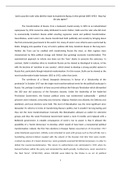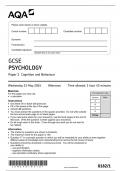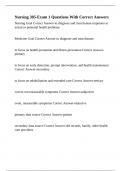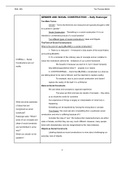Essay
AQA A Level History Coursework: Tsarist and Communist Russia (A* Grade)
- Institution
- AQA
The question answered to an A* standard is: ‘Lenin was the ruler who did the most to transform Russia in the period ’. How far do you agree? Purchasing this full coursework will be extremely useful in having an in depth understanding of the period of Russian history from . It includes 2 prim...
[Show more]







